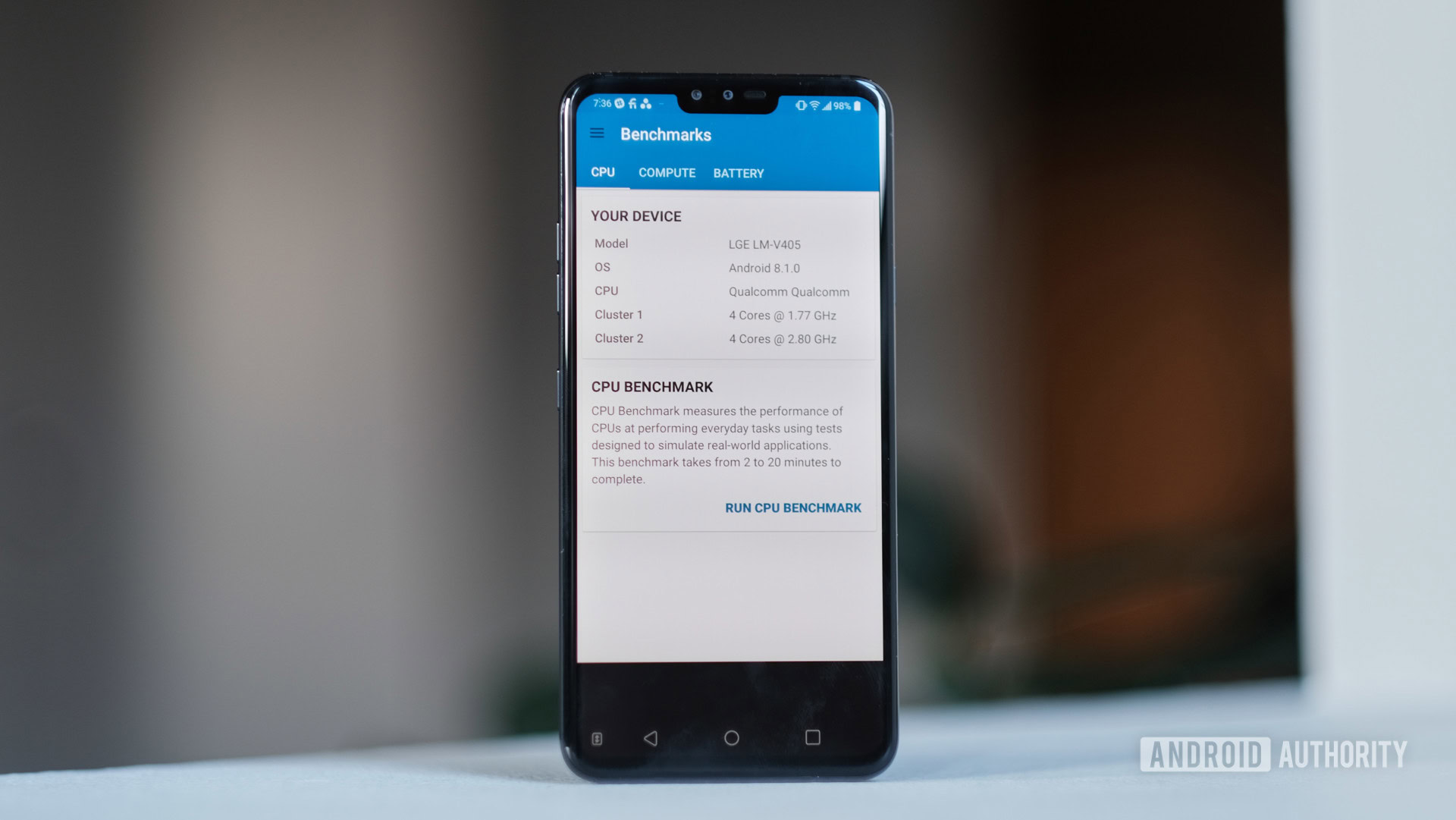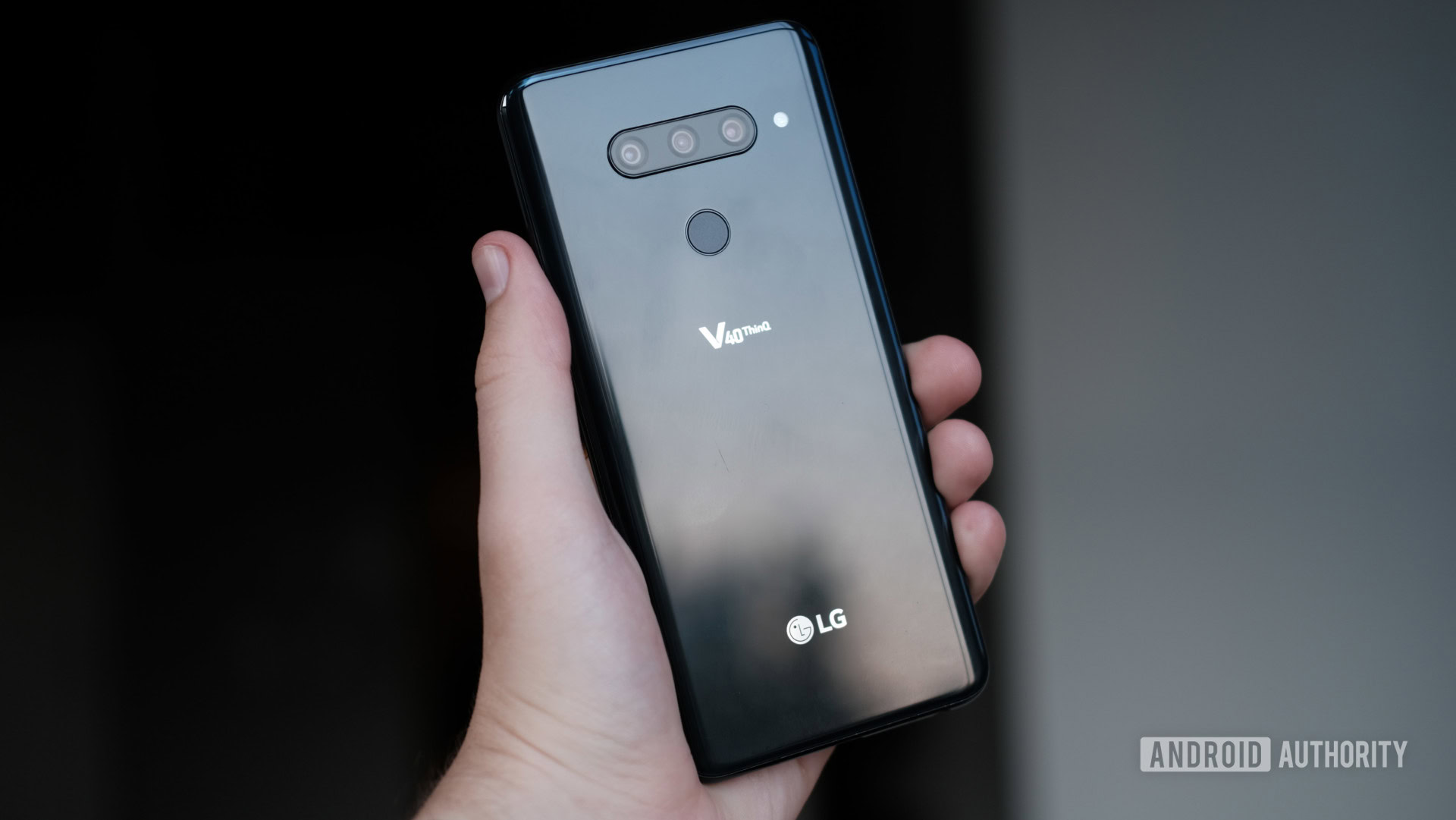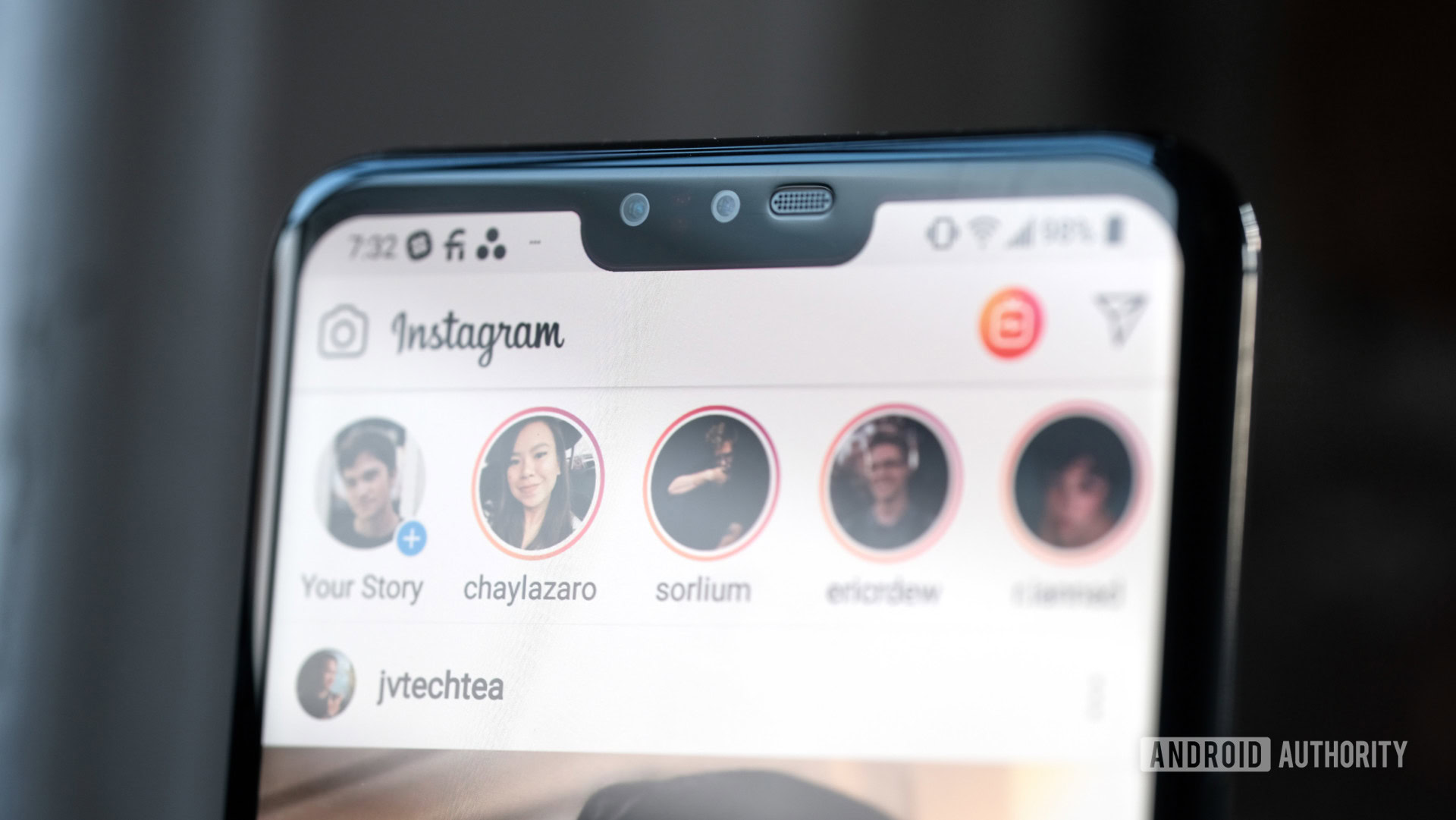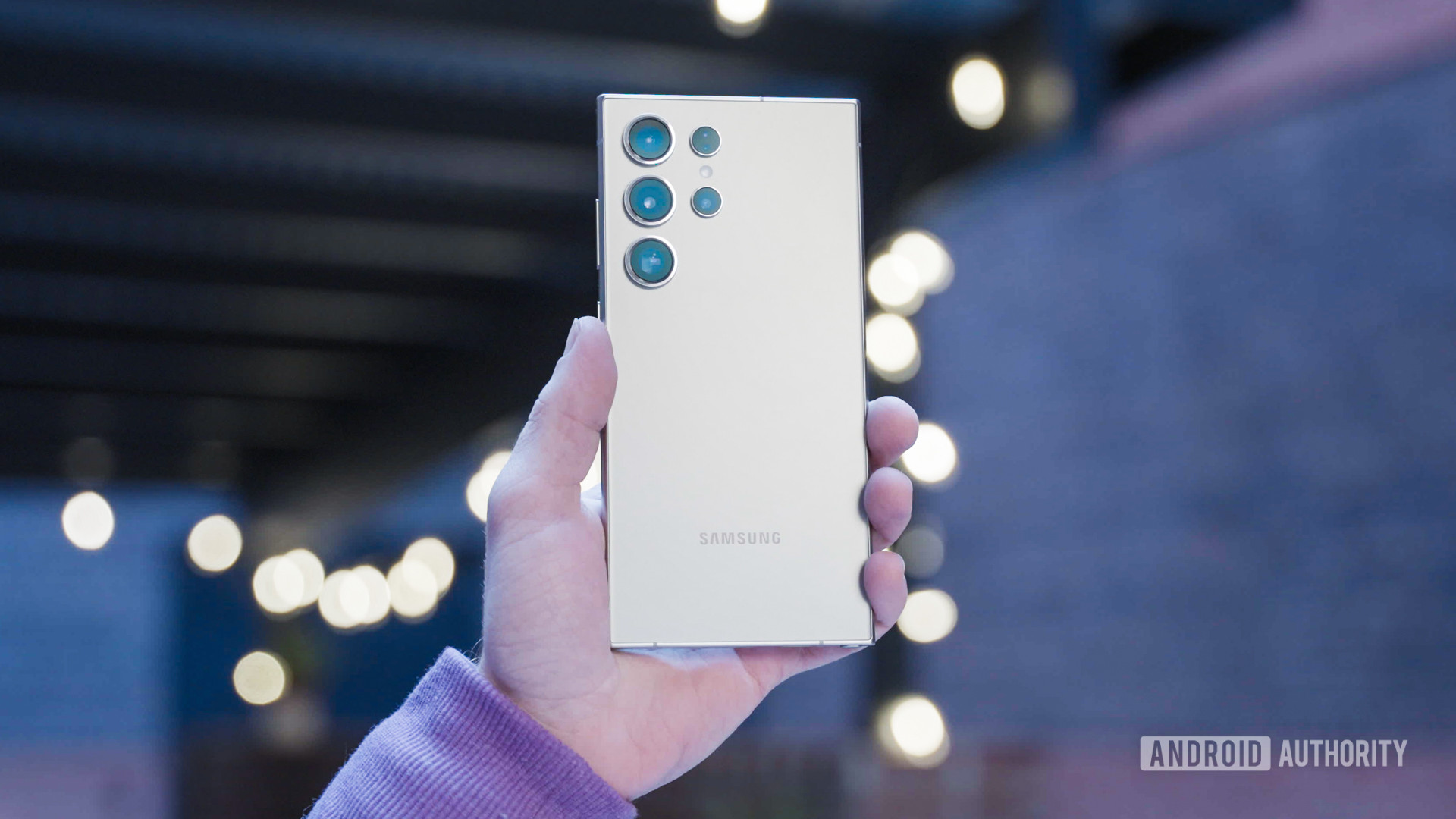Affiliate links on Android Authority may earn us a commission. Learn more.
LG V40 vs V30 specs: Is it more than just two extra cameras?
The LG V40 ThinQ is finally official, the first of many phones projected to arrive in October. Unlike the rest of the bunch however, this one has five cameras in total.
Let’s compare the LG V40 vs LG V30 in terms of specs, to see if the new V40 is more than just a camera-focused upgrade.
The expected power upgrade

Unlike the LG V30s and G6, the Korean company isn’t using the previous year’s chip for the LG V40 ThinQ. A top-flight Snapdragon 845 chipset keeps things running here, so the phone should hold its own against most other flagships released this year. Rounding out the list of performance-related specs is 6GB of RAM and 64 or 128GB of storage.
By comparison, the LG V30 offers a Snapdragon 835 chipset and 4GB of RAM, making it a step below the new phone. However, both have 64GB or 128GB of storage (the V30 Plus offers 128GB), so don’t hold out for a 512GB V40 at launch.
The new phone also packs a 6.4-inch P-OLED screen (3,120 x 1,440) — slightly larger than its predecessor’s 6-inch P-OLED display (2,880 x 1,440).
An iterative design

The V30 wasn’t the most aesthetically pleasing phone of 2017, but its glass design wasn’t bad. In fact, the design enabled IP68 water/dust resistance and wireless charging.
LG’s latest phone isn’t a major departure from the V30, save for its new notch. The similarities are more than just skin-deep too, as the new phone still has IP68 and wireless charging credentials. So if these two features are non-negotiable, either phone will serve you well. Speaking of non-negotiable features, many readers will be glad to know the V40 retains the headphone jack.
Finally, one of the more notable design-related features this year is the inclusion of a Google Assistant button. It’s like the Bixby button on Samsung phones, but better because it’s not Bixby (I’m kidding (maybe)).
Any battery improvements?
If the Galaxy Note 9 made you hope the V40 would have a bigger battery, you’re going to be disappointed. The phone comes with a 3,300mAh battery with Quick Charge 4 (but only a QC 3 charger in the box), matching up to the V30’s 3,300mAh pack (albeit with Quick Charge 3.0).
Five cameras on V40

LG’s older phone had a very capable camera, serving up a 16MP f/1.6 main camera (with OIS and one-micron pixels) and a 13MP f/1.9 super wide angle shooter.
The LG V40 offers three main cameras on the rear, starting with a 12MP OIS-stabilized main camera (f/1.5) and a 16MP f/1.9 super wide angle shooter. The V40’s main camera sees a drop in resolution compared to the V30, but it has larger, 1.4-micron pixels and a wider aperture, which should make for better low-light shots. Hopefully, the sensor size itself has also increased, which would help at night too.
The V40’s super wide angle camera has seen a megapixel bump compared to the V30’s camera, but the field of view has also been slightly reduced (from 120 degrees to 107 degrees). Nevertheless, our own Lanh Nguyen didn’t find an issue with the reduced field of view in his LG G7 review.
There’s also a brand-new 12MP 2x telephoto shooter, which should make your zoomed-in shots look better than digital zoom with the V30’s camera (at least during the day).

All in all, this is a more versatile camera setup than the V30 and other dual-camera smartphones. You won’t have to choose between a phone with wide angle shots or a phone with telephoto zoom.
The LG V40 adopts a dual-camera selfie setup as well, with an 8MP f/1.9 standard shooter and a 5MP wide-angle snapper. The V30 just had one 5MP wide-angle shooter. Hopefully, the difference in quality between the two cameras isn’t massive on the new phone.
LG V40 vs V30: Are the new specs worth it?
| LG V40 ThinQ | LG V30 | |
|---|---|---|
Display | LG V40 ThinQ 6.4-inch QuadHD+ P-OLED FullVision 3,120 x 1,440 resolution 538 ppi 19.5:9 aspect ratio | LG V30 6.0-inch QuadHD+ P-OLED FullVision 2,880 x 1,440 resolution 538 ppi Corning Gorilla Glass 5 18:9 aspect ratio |
Processor | LG V40 ThinQ Octa-core Qualcomm Snapdragon 845 Mobile Platform | LG V30 Octa-core Qualcomm Snapdragon 835 Mobile Platform |
GPU | LG V40 ThinQ Adreno 630 | LG V30 Adreno 540 |
RAM | LG V40 ThinQ 6GB LPDDR4x | LG V30 4GB LPDDR4x |
Storage | LG V40 ThinQ 64 or 128GB UFS 2.1 MicroSD expansion up to 2TB | LG V30 V30: 64GB V30+: 128GB MicroSD expansion up to 2TB |
Cameras | LG V40 ThinQ Rear Main camera: 12MP sensor, ƒ/1.5 aperture, 78° field-of-view, 1.4µm pixel size, OIS, Dual PD Autofocus Super wide: 16MP sensor, ƒ/1.9 aperture, Crystal Clear Lens, 107° field-of-view Telephoto zoom: 12MP sensor, ƒ/2.4 aperture with 45° field of view Front Standard: 8MP sensor, ƒ/1.9 aperture, 1.12µm pixel size, 80° field of view Wide: 5MP sensor, ƒ/2.2, 1µm pixel size, 90° field of view | LG V30 Rear cameras - Main: 16 MP Standard Angle sensor with ƒ/1.6 aperture, laser detection autofocus, OIS, EIS - Secondary: 13 MP Wide Angle sensor with ƒ/1.9 aperture Front camera - 5 MP Wide Angle sensor with ƒ/2.2 aperture |
Audio | LG V40 ThinQ Boombox Speaker DTS:X 3D Surround Sound Hi-Fi Quad DAC 3.5mm headphone jack | LG V30 Hi-Fi Quad DAC 3.5 mm headphone jack |
Battery | LG V40 ThinQ 3,300mAh Non-removable Wireless charging Qualcomm Quick Charge 4 (Quick Charge 3 adapter in box) USB Type-C port | LG V30 3,300 mAh Non-removable Wireless charging Qualcomm Quick Charge 3.0 USB Type-C port |
IP rating / other certifications | LG V40 ThinQ IP68 water and dust resistance MIL-STD 810G | LG V30 IP68 water and dust resistance MIL-STD 810G |
Network | LG V40 ThinQ LTE-A 4 Band CA | LG V30 LTE-A 4 Band CA |
Connectivity | LG V40 ThinQ Wi-Fi 802.11 a, b, g, n, ac Bluetooth 5.0 BLE NFC | LG V30 Wi-Fi 802.11 a, b, g, n, ac Bluetooth 5.0 BLE NFC |
SIM | LG V40 ThinQ Nano SIM | LG V30 Nano SIM |
Software | LG V40 ThinQ Android 8.1 Oreo LG UX 6.0+ | LG V30 Android 7.1.2 Nougat LG UX 6.0+ |
Colors | LG V40 ThinQ New Aurora Black, New Platinum Gray, New Moroccan Blue, Carmine Red | LG V30 Aurora Black, Cloud Silver, Moroccan Blue, Lavender Violet |
Dimensions and weight | LG V40 ThinQ 158.7 x 75.8 x 7.7mm 168.9g | LG V30 151.7 x 75.4 x 7.3mm 158 g |
If the LG V40 had an identical camera setup to the V30, there wouldn’t really be much incentive to upgrade. Sure, the V40 is more powerful, but I wouldn’t hold my breath for a night and day difference. Heck, even the battery capacity is identical.
That’s not to say the V40 doesn’t pack a ton of features, but these same features can often be found on the 2017 flagship anyway (IP68, wireless charging, super-wide angle camera). So if you can find a V30 for a good deal, you might want to consider getting that instead.
More LG V40 content